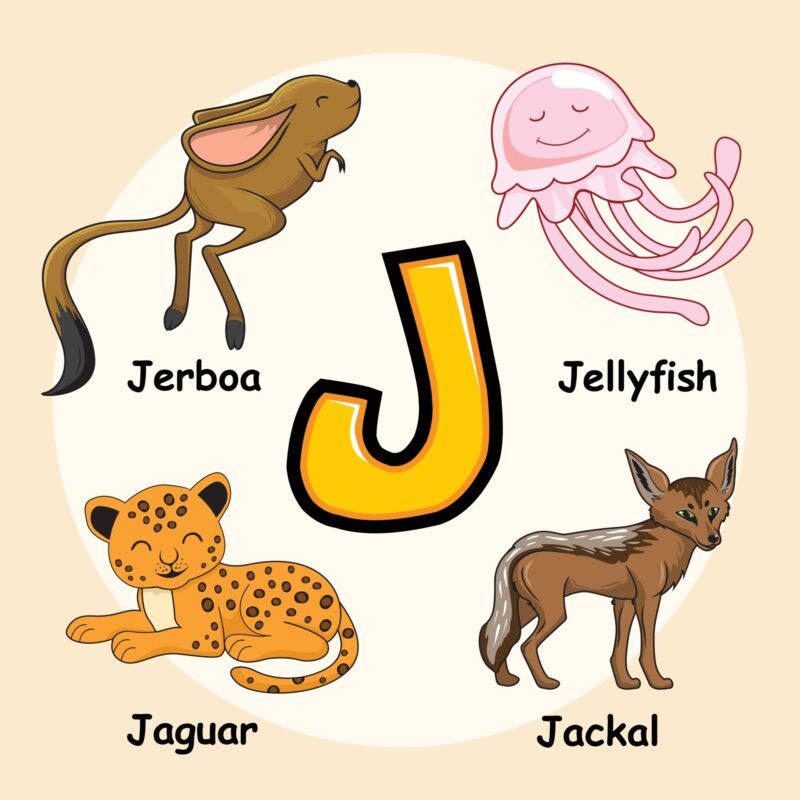Ever got stuck when writing down the names of animals when playing “Name Place Animal Thing” with your kids, friends, or family? You might have felt that no other animals began with J when it was turned for the tenth letter of the English alphabet.
But let us tell you, the animal kingdom is almost as widespread as the Universe, if not more. Likewise, there is no shortage of animals that start with J.
Common, uncommon, or endangered species – the list of animals that start with the letter J is (almost) endless. And if you don’t believe us, here is why you should. In this article, we present a listicle of 35 amazing animals that start with J!
Of course, you know about the jackal, the jackass, and the jaguar. That is why we have gathered together in this list some very unique animals in English. Happy learning!
Some Animals That Start with J
Here is a list of animals curated specifically for you that starts with J.
1. Jabiru

Scientific Name | Jabiru mycteria |
Class | Aves |
Native Country | South America |
One of the most significant animals that starts with J, the Jabiru, is a member of the stork family. It is the tallest flying bird in South America and is characterized by its large, black, featherless head.
It has a white body with red bands around its neck, making it easily identifiable from a distance. Owing to their appearance, they have been named the Jabiru, which translates to “swollen neck” in the Tupi-Guarani language.
It lives near water sources and feeds on water insects, mollusks, small fishes, and reptiles.
Interesting Fact: They are monogamous and build their nests on large trees using sticks and twigs, the diameter of which increases every mating season.
2. Jacamar

Scientific Name | Jacamar |
Class | Aves |
Native Country | South and Central America |
The Jacamars represent a species of small to medium-sized perch birds. They have rounded wings, small feet, and round necks. Males usually have distinct white necks, while females have beige-colored necks.
Mainly insectivores, these birds have long, thin bills that serve as adaptations to catch small insects mid-air. A handful of birds of these species have bright metallic-colored plumage. A majority of these perch birds, however, appear dull-colored.
Interesting Fact: The male Jacamar fends for his partner during the mating season. After capturing its prey, it hits it against a perch, which causes the prey to lose its feathers, making it incapable of escape.
3. Jacana

Scientific Name | Jacanidae |
Class | Aves |
Native Country | Asia, Africa, Australia, and America |
The Jacanas are one of the most interesting animals. Living close to water bodies, they are omnivores and mostly depend on the aquatic vegetation for survival. They feed on fish, seeds, insects, and other invertebrates.
They have long legs and sharp claws that help them wade through the water to hunt for food. The fact that they live by shallow waters and walk through them gives them an illusionary appearance of walking over the lilies; hence, they are called “Jesus birds.”
Interesting Fact: Females are larger than males, mate with several males, and lay eggs in the nests of the male birds. When the eggs hatch, the males take complete charge and teach them basic survival skills.
4. Jack Russell Terrier

Scientific Name | Canis lupus |
Class | Mammalia |
Native Country | England |
Named after Reverend Jack Russell, who first bred them in England in the 19th century, the Jack Russell Terrier was bred specifically for fox hunting. Being baying terriers, they bark loudly near foxholes, driving them away from their habitat without killing them.
No wonder their hunting instincts are present to date, as they are known to be loud barkers. However, they are highly energetic and are great travel companions in rough terrains and as pets. They need regular exercise and are heavy shedders.
Interesting Fact: The Jack Russell Terrier can jump up to 5 feet (=2 meters) high in the air!
5. Jackdaw
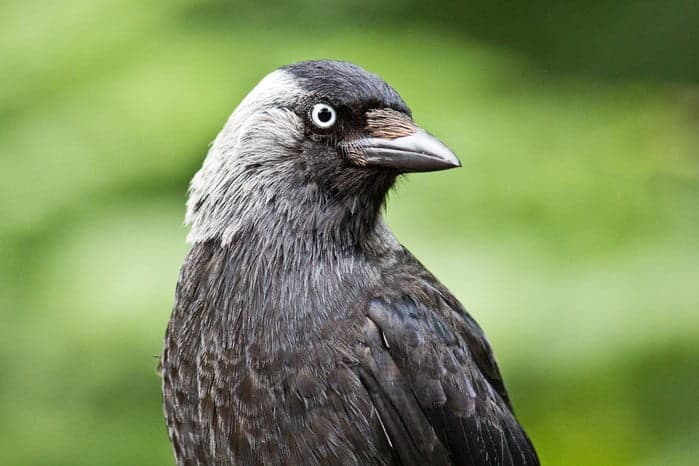
Scientific Name | Corvus monedula |
Class | Aves |
Native Country | Europe |
The Jackdaw is one of the most intelligent animals. While it may look like a counterpart to the crow, it can easily be distinguished by its white iris and pale gray neck.
It is a scavenging omnivore, meaning it feeds on carrions, invertebrates like spiders and insects, and even litter. This species mates for a lifetime, and both parents participate in raising their young ones.
They live in large colonies of up to a thousand birds and are commonly seen in farmlands and woodlands.
Interesting Fact: They can mimic human sounds and can be tamed to teach several tricks. However, they are not domesticated.
6. Jackrabbit

Scientific Name | Lepus californicus |
Class | Mammalia |
Native Country | Western United States and Mexico |
Unlike what the name suggests, the Jackrabbit is part of the hare family and not the rabbits. They have long hind legs and extra large ears, each serving a distinct function of sprinting away from predators and allowing cooling of the body, respectively.
The color of their fur helps them blend with the surrounding atmosphere (their natural habitat being plains, rocky areas, and deserts). They live in shallow holes called “forms” instead of caves. They are nocturnal herbivores that live for up to 1 year to 5 years.
Interesting Fact: The Jackrabbit is one of the fastest animals, running in a zig-zag pattern of up to 60 mph!
7. Jackson’s Chameleon

Scientific Name | Trioceros jacksonii |
Class | Reptilia |
Native Country | East Africa |
The Jackson’s Chameleon, like other chameleons, is great in camouflaging. It has three horns on its head, giving it a unique appearance, much like the prehistoric Triceratops.
It is ornamented with blue and yellow dots over its whole body. They eat insects and other small invertebrates and use their long tongues to capture prey. These animals, beginning with J, are usually shy, and therefore, it’s best to keep them single to avoid fights with each other using their horns.
Interesting Fact: The females keep their eggs in the belly and birth live young ones who can fend for themselves right after birth.
8. Jackson’s Widowbird

Scientific Name | Euplectes jacksoni |
Class | Aves |
Native Country | Africa |
One of the critically endangered animals, very little information is available on Jackson’s Widowbird. Found mainly in grasslands, one of the most distinctive features of this bird is its long, downward-curved tail.
However, this characteristic tail pattern can only be seen in breeding males. Females are characterized by the presence of streaks in their bodies.
Massive deforestation leading to habitat loss is the most important cause of the decline of this species.
Interesting Fact: Breeding between February and July, the male widowbirds are polygynous and defend their territories where some females are present.
9. Jaeger

Scientific Name | Stercorarius |
Class | Aves |
Native Country | North America |
The Jaeger is one of the most persistent animals. If you are wondering why we used the adjective, here’s the clue. They are kleptoparasitic and very well-known for their rapacious behavior.
They mostly steal their prey from other birds, sometimes inducing them even to vomit the meal they had! Feeding mostly on fish, small mammals, insects, and the eggs of other birds, they rarely hunt for food.
Interesting Fact: They breed in the Arctic tundra and are monogamous. If their mate dies, they don’t breed the entire year.
10. Jaguarundi Cat

Scientific Name | Herpailurus yagouaroundi |
Class | Mammalia |
Native Country | Central and South America |
One of the most agile animals, the Jaguarundi Cats, are excellent climbers and swimmers. With a speed of 60mph, they can catch birds mid-air by jumping up to 6.5 feet!
They are covered in dark gray, reddish, or brownish fur, with scattered white spots up to 3 months old. These felines have long body and short feet, with their heads shaped like an otter’s. Hence, they are also nicknamed “Otter Cats.”
Interesting Fact: The Jaguarundi Cat is only one of the few carnivorous animals which is not nocturnal.
11. Jamaican Boa

Scientific Name | Chilabothrus subflavus |
Class | Reptilia |
Native Country | Jamaica |
This is one of the animals listed under IUCN’s Red List of Threatened Species in 2015 due to massive deforestation and predation by mongoose. This non-venomous snake is an opportunistic carnivore.
It hangs from tree branches and caves and catches bats and birds mid-air for its meal. It mates during the rainy season, and the female can lay between 5 and 44 babies. The Jamaican Boa is nocturnal.
Interesting Fact: The color pattern (greenish-yellow stripes in the front and pitch black at the back) is distinct and makes it look like two snakes coiled up instead of one.
12. Jamaican Oriole

Scientific Name | Icterus leucopteryx |
Class | Aves |
Native Country | Jamaica |
One of the cutest animals, the Jamaican Oriole, is a miniature bird, much like the sparrow. Characterized by a bright yellow color for males and a greenish hue in females, these birds are not rare but are rarely seen! They are herbivores and feed on seeds, fruits, and nectar of flowers.
After nesting, they switch to an insectivorous diet and feed almost exclusively on insects (mainly caterpillars) and spiders. They have a distinct white spot on their wings and a triangular white patch below their sturdy bills.
Interesting Fact: Each has a unique call and is an identification point for them, by which other orioles can recognize them.
13. Japanese Beetle

Scientific Name | Popillia japonica |
Class | Insecta |
Native Country | Japan |
A herbivore insect, the Japanese Beetle is colored a luminous bottle-green with marked white tufts of hair. Native to Japan, they are considered pests in the United States and Canada owing to their voracious appetite.
They are great swimmers and live in groups called swarms. They have a 2-year lifespan and do not cause any harm to humans. They feed on the foliage and leaves of plants.
Interesting Fact: A swarm of Japanese Beetles can empty a fully-developed fruit-bearing tree in 15 minutes!
14. Japanese Chin

Scientific Name | Canis lupus |
Class | Mammalia |
Native Country | China |
The Japanese Chin was originally bred as a lapdog that could be easily carried in the sleeves of a kimono. Owing to its short stature, this dog needs to be handled with caution and extreme gentleness.
Therefore, despite being toy dogs that are perfect companions, they should not be left around with little children. They need little exercise but good grooming as their nails grow very long within a short period. They prefer a soft voice instead of a harsh scolding during training.
Interesting Fact: These are some of the sweetest animals that experience extreme separation anxiety.
15. Japanese Dwarf Flying Squirrel

Scientific Name | Pteromys momonga |
Class | Mammalia |
Native Country | Japan |
Talking of cute little animals, we cannot afford to miss out on this one. The Japanese Dwarf Flying Squirrel’s mini size enables it to escape from predators by being barely visible. They are herbivores but may occasionally feed on insects. These arboreal animals are nocturnal. They build their nests in tree cavities of conifers and line their nests with moss or lichen.
Interesting Fact: They have a unique adaptive membrane called the “patagium,” which allows them to glide along trees by up to 100 meters!
16. Japanese Macaque
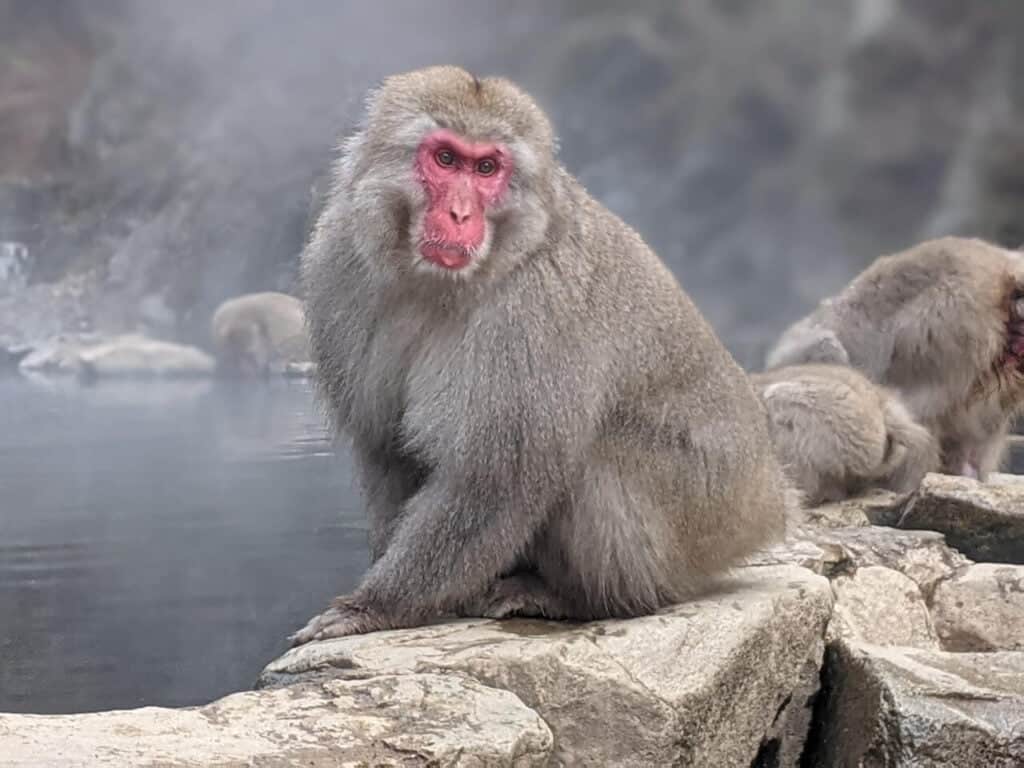
Scientific Name | Macaca fuscata |
Class | Mammalia |
Native Country | Japan |
One of the land-dwelling animals that starts with J, the Japanese Macaque, lives in mountainous forests. Also known as the “snow monkey” because they live in regions covered with snow half the year, they have unique adaptations to survive the cold.
They have brownish-gray fur that serves as an insulator to protect them from the cold and live mostly on tree branches to avoid the snow. They have a pinkish hairless face, resembling that of a human. They live in groups that males lead.
Interesting Fact: They have cheek pouches for storing food, and when cold, they bathe in volcanic hot springs to keep warm.
17. Japanese Rat Snake

Scientific Name | Elaphe climacophora |
Class | Reptilia |
Native Country | Japan |
Non-venomous, the Japanese Rat Snake comes in various colors, ranging from blue, green, red, orange, or even white! They feed on rats, lizards, birds, and insects. It has a timid temperament and tries to flee when approached by a human by mistake.
They spend most of their time on treetops and are good climbers. They reside in farmlands, woodlands, and forests, and given their diet habit, they help keep the rodent population in check.
Interesting Fact: The Japanese consider the albino variety of this snake to be a symbol of good luck and prosperity.
18. Japanese Spider Crab

Scientific Name | Macrocheira kaempferi |
Class | Malacostraca |
Native Country | Japan |
The largest living crab species, the Japanese Spider Crab, is found along the seafloor. During the mating season, it migrates towards the shallow waters. What is particularly unique about this crab is the large chelipeds (legs) that it boasts of.
The chelipeds grow even after adulthood and can regrow during molting if broken or torn off due to an injury. They are nocturnal and are seafloor scavengers, feeding off dead and decaying crustaceans, fish, or algae. Having ten legs, this species can live for up to 50 to 100 years!
Interesting Fact: Females can lay up to 1.5 million eggs in a single season, but only a handful survive.
19. Japanese Spitz

Scientific Name | Canis lupus |
Class | Mammalia |
Native Country | Japan |
The Japanese Spitz dog species is one of the most playful animals. Characterized by an all-white double coat of fur, curly tail, pointed snout, and triangle ears, they resemble Samoyeds regarding physical attributes.
They make great watchdogs because of their keen nature, high energy level, and mental alertness. They are playful and make for the best play companions. Their shedding season is a headache for pet owners, though, because they shed A LOT!
Interesting Fact: They are also called “cloud dogs” because of their appearance.
20. Javan Rhinoceros
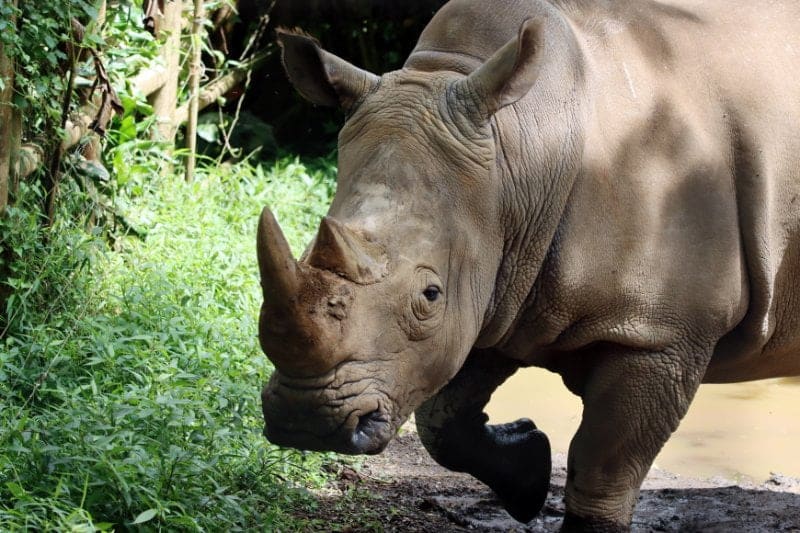
Scientific Name | Rhinoceros sondaicus |
Class | Mammalia |
Native Country | Indonesia |
With only around 72 living populations in the world, the Javan Rhinoceros is one of the endangered animals. They have thick skin that has folds resembling armor. They are herbivores.
The females give birth once every 3 to 5 years after a gestation period of 16 months. Originally a native of the grasslands, their diet habit includes berries, fruits, shrubs, and herbs.
Interesting Fact: The Javan Rhinoceros has one horn and is also called the “one-horned rhino.” Male rhinos have horns that can grow up to 10 inches long, with females having short stumps or no horns.
21. Javan Warty Pig
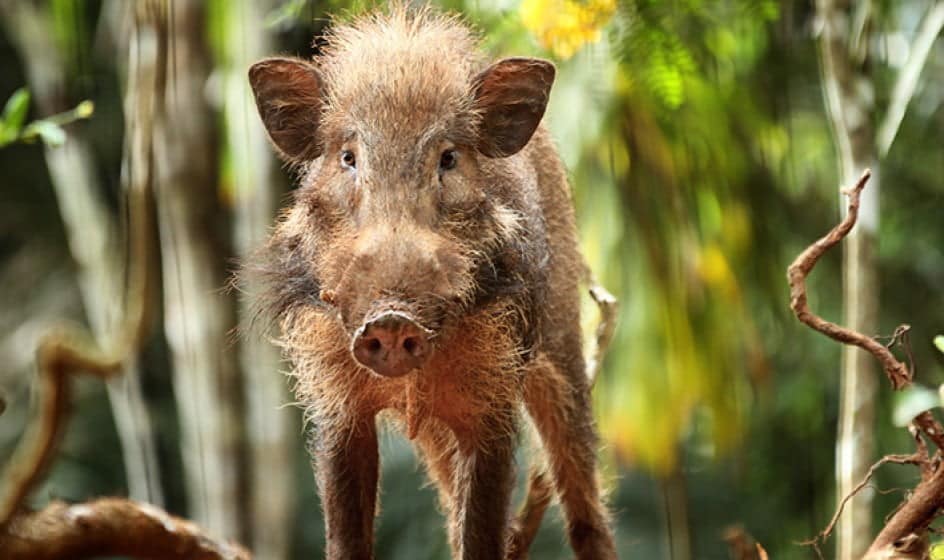
Scientific Name | Sus verrucosus |
Class | Mammalia |
Native Country | Indonesia |
Identified by three pairs of facial warts, the Javan Warty Pig is named because of its facial features. According to the IUCN Red List, they are included under the list of endangered animals that start with J.
They have flattened and elongated faces. They have black even toes and a completely black body. They are primarily solitary animals weighing up to 239 pounds.
Interesting Fact: They have a very short lifespan, barely reaching up to 8 years.
22. Javanese Bird Grasshopper
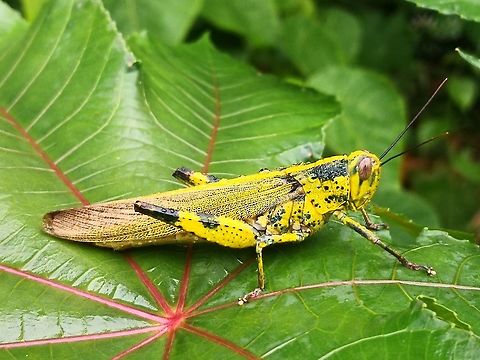
Scientific Name | Valanga nigricornis |
Class | Insecta |
Native Country | Southeast Asia |
The Javanese Bird Grasshopper is a type of grasshopper that was first described by German zoologist Hermann Burmeister in 1838. A herbivore, it feeds on the foliage of trees. It exhibits diurnal behavior and loves basking in the sun.
They are colored greenish brown, green, or yellow, with bluish-black spots. Their hind wings are red and visible only during flight. These act as support to help them jump long distances to escape predators.
Interesting Fact: Male grasshoppers communicate by stridulation – making sounds by rubbing the hind legs against the wings.
23. Javanese Cat
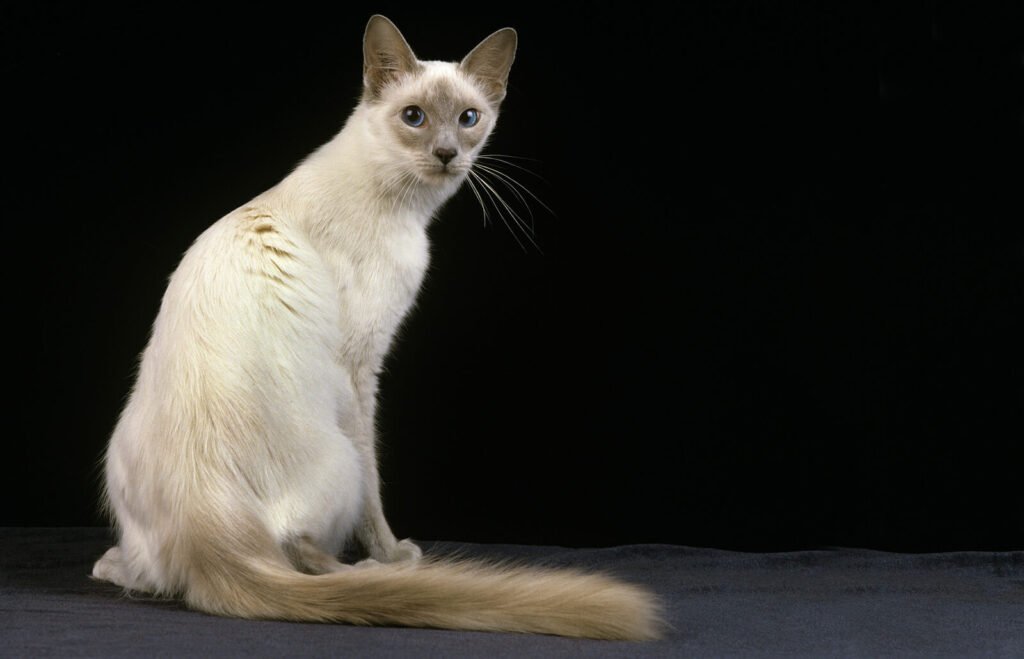
Scientific Name | Felis catus |
Class | Mammalia |
Native Country | North America |
This is a man-made breed that was bred to mix the behavioral features of the Siamese cat with a more favorable physical appearance. No wonder they come in 24 different fur colors! Javanese Cats are highly social, extremely adaptable, and company-loving friendly pets.
Agility is their superpower, and they have high energy levels, making them eager for physical activities, including climbing and jumping. Unlike other cats, they prefer being around other pets.
Interesting Fact: They have a unique vocal tone that they use to express different needs.
24. Jay

Scientific Name | Garrulus glandarius |
Class | Aves |
Native Country | Eastern and Central United States |
One of the animals that start with J from the crow family, the Jaybird, is a sweet, medium-sized bird. It builds nests in a distinct cuplike shape. The bird’s feathers were once a coveted accessory in the 19th century.
It is an important oak tree disperser, storing up to 5,000 acorns in one year to survive through the winter. They are omnivores, feeding on insects, small mammals, eggs of other birds, seeds, and nuts.
Interesting Fact: They can mimic the voices of other animals when in danger, thus effectively distracting the predator.
25. Jeannel Zebra Blue

Scientific Name | Leptotes jeanneli |
Class | Insecta |
Native Country | Africa |
The Jeannel Zebra Blue is one of the least-known animals—the larvae of this species of butterfly feed on legumes. Belonging to the family Lycaenidae, not much information is available about them.
Adults are on wing year-round, increasing significantly from November to April. They have a wingspan of 22-29 mm for males and 26-30 mm for females.
Interesting Fact: They have a lifespan of just about 2 months.
26. Jerboa

Scientific Name | Jaculus |
Class | Mammalia |
Native Country | North Africa and Asia |
The Jerboas are rodents that resemble mice in terms of their physical appearance. They have characteristic hind legs, about twice the length of their front legs, and a stout long tail ending in tufts.
These features combined allow them to hop and maintain balance while doing so. Feeding on insects, plants, and seeds, the color of their coat camouflages them in their natural habitat. They also have a strong sense of hearing and smell that helps them escape predators.
Interesting Fact: They don’t drink and hydrate themselves by absorbing water from their food.
27. Jerusalem Cricket
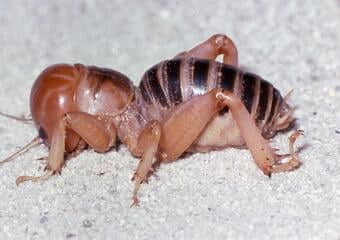
Scientific Name | Stenopelmatus fuscus |
Class | Insecta |
Native Country | United States and Mexico |
These are some of the flightless animals that bear the burden of incorrect terminology (they do not belong to the cricket family). They have six legs, a striped body, and an oval-shaped large (compared to the rest of the body) head with piercing eyes.
They are not evil, but their bites are extremely painful, causing skin rashes. That being said, they bite only when threatened. They help keep the rodent population in check and help maintain soil aeration and fertility.
Interesting Fact: Because they don’t have ears, they communicate through vibrations during the mating season, and the females eat the males after the act is performed.
28. Jewel Beetle

Scientific Name | Buprestidae |
Class | Insecta |
Native Country | All continents except Antarctica |
The Jewel Beetle is one of the most beautiful animals that start with J. As the name suggests, this insect is used as jewelry in some cultures. Their hard wings emit an iridescent color, ranging from blue to green, giving them an ornamental appearance.
They are herbivores and feed on dead and decaying trees. They are one of the most important species of the ecosystem as they help eliminate toxins from soil and water and make it healthy and habitable for other species.
Interesting Fact: The texture of the wings gives these insects the iridescent appearance they are famous for.
29. Jico Deer Mouse

Scientific Name | Habromys simulatus |
Class | Mammalia |
Native Country | North America |
As intriguing as the name sounds, the animal looks even more intriguing. Bearing an uncanny resemblance to a cross between a deer and a mouse, this rodent inhabits moist lowlands and forests.
Without the antlers of a deer, the adult Jico Deer Mouse weighs just about 40 grams! This, unfortunately, is one of the critically endangered animals. According to reports from the IUCN, only about 50 of these animals are thought to remain.
Interesting Fact: They possess small husks for defense and feeding off of vegetation.
30. John Dory
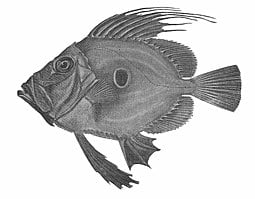
Scientific Name | Zeus faber |
Class | Actinopterygii |
Native Country | Europe, Africa, Southeast Asia, and Australia |
These are some of the least-known animals. The John Dory lives close to the ocean floor and does not come towards the upper levels of the ocean unless it needs to. Playful by nature, they like burying themselves in the sand.
They have a golden hue on their body, with a distinctive black eye-like marking on each side, designed to flash it off against predators. Unlike other fish, they have two dorsal fins supported by dermal bones instead of cartilage.
Interesting Fact: They look oval-shaped and large when looking from the sides. But their bodies have a unique design – they are laterally compressed and sleek, so when you look at them from the front or back, they are almost not visible anymore!
31. Jonah Crab

Scientific Name | Cancer borealis |
Class | Malacostraca |
Native Country | North America |
The Jonah Crab offers the most affordable edible meat. They have a reddish rough carapace for protection. Characterized by tough and sharp red pinchers, they have equally sharp claws with black tips. They are omnivores, surviving on algae, mussels, snails, etc.
When need be, they turn into scavengers and feed off carrion. They mate between late winter and early spring and reproduce by spawning.
Interesting Fact: The meat of Jonah Crabs is rich in proteins and fats and contains trace amounts of calcium and iron.
32. Julia Butterfly

Scientific Name | Dryas iulia |
Class | Insecta |
Native Country | America |
The Julia Butterfly is commonly found in open woodlands, forests, parks, and shrubs and is abundant in number. Their forewing is elongated, and the males and females can be easily identified by their black markings.
The males have a blackish spot at the front of the forewing, whereas the females have a black bar. They feed on nectars of flowers and tears of caiman and are active throughout the day. Of a bright orange color, the outcome of the mating of these butterflies is controlled by the females.
Interesting Fact: The males derive nutrition by mud-puddling, a process in which males gather around the damp ground to absorb nutrients by a process similar to water filtration.
33. Jumping Spider

Scientific Name | Salticidae |
Class | Arachnida |
Native Country | All over the world |
The Jumping Spider is one of the most beautiful animals that starts with J. They come in a rainbow of colors and are carnivorous. Surviving insects trap their prey by jumping on them because, as the name suggests, they can jump high.
They use silks to build nests instead of webs where they molt and hatch eggs. They also spin silk laces to prevent a harsh fall if they miss their prey while jumping. They have excellent vision (eight eyes) and can direct blood flow toward their limbs to enable themselves to jump forcefully.
Interesting Fact: The males sing and dance to attract a potential mating partner, and the white hairy structure enables the males to capture the vibrations of the song and dance.
34. Junco

Scientific Name | Junco hyemalis |
Class | Aves |
Native Country | North America |
One of the most common animals that start with J, you will find them visiting your house garden during the winter. The Junco has a conical bill that is perfectly adapted to eating seeds. It has a white long tail. It migrates during the night to avoid predators.
Typically small and gray-brown, these birds feed on the ground. They breed in Canada and the Northwestern United States.
Interesting Fact: A flock of Juncos is called a blizzard.
35. Junglefowl

Scientific Name | Gallus gallus |
Class | Aves |
Native Country | South and Southeast Asia |
Considered to be ancestors of the domestic chicken, the Junglefowl is one of the most attractive animals that start with J. However, unlike their successors, they are adept at flying high and quickly! They are shy and prefer solitary environments. They breed during the spring and summer seasons.
Communicating with each other through sounds, they have alarm calls both for mating and for warning other members of their species of an upcoming threat by a predator.
Interesting Fact: Males have bright plumage, whereas females have plumages that can help them camouflage in the habitat that they live in.
Conclusion
The ecosystem presents a wide variety of living species, and this statement holds for animals that start with J. There is no specific count for the total number of animals beginning with J, but there are certainly countless.
These include widely popular varieties to the lesser known and even extinct species. There are even animals that start with J that may not have been discovered yet! Hence, when it comes to the question, “What are some animals that start with J?” there is no definitive answer.
But the above listicle was an attempt to bring into the limelight some of the not-so-well-known names not only to expand your knowledge but also to bring awareness about the future of some species we may no longer see in the next few years.
Continue adding to the list if you know more animals in the comments section below.

